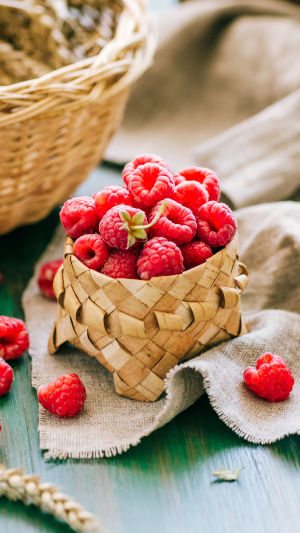Raspberries are not only delicious but also packed with nutrients that contribute to overall health.
They are an excellent source of dietary fiber, which supports digestive health and helps maintain a healthy weight by promoting satiety. A cup of fresh raspberries contains approximately:
• Calories: 65
• Fiber: 8 grams
• Vitamin C: 54% of the Daily Value (DV)
• Vitamin K: 12% of the DV
• Manganese: 41% of the DV
• Antioxidants: Raspberries are rich in antioxidants such as quercetin and ellagic acid, which help combat oxidative stress and inflammation.
Raspberries also provide small amounts of essential vitamins and minerals, including folate, iron, and calcium. Their high fiber content aids in digestion, while antioxidants may help protect against chronic diseases like heart disease and certain cancers.
Raspberries for Beginners. Complete Guide to Growing, Pruning, Varieties & more.
Video by My Aussie Garden & Kitchen
<h3> How to Grow Raspberries in Your Garden </h3>
Raspberries are relatively easy to grow and can thrive in various climates. Here’s a guide to help you cultivate them successfully:
<b> 1. Choosing the Right Variety:</b> Select raspberry varieties suited to your climate. There are two main types: summer-bearing and everbearing. Summer-bearing raspberries produce fruit once a year, while ever-bearing varieties can produce two crops annually.
<b> 2. Planting:</b> Plant raspberries in early spring or fall. Choose a sunny location with well-drained soil. Space the plants about 2-3 feet apart to allow for their spread. Dig a hole and place the raspberry canes, making sure the roots are well spread out. Cover with soil and water thoroughly.
<b> 3. Supporting:</b> Install a trellis or support system to help the canes grow upright. This helps prevent disease and makes harvesting easier. Use wire or netting to guide the canes.
<b> 4. Watering:</b> Keep the soil consistently moist but not waterlogged. Raspberries need about 1-2 inches of water per week, especially during dry spells. Mulching can help retain soil moisture and suppress weeds.
<b> 5. Fertilizing: </b> Apply a balanced fertilizer in early spring before new growth begins. Raspberries generally benefit from additional feeding during the growing season, especially if the soil is low in nutrients.
<b> 6. Pruning:</b> Prune raspberries to promote healthy growth and fruit production. For summer-bearing types, remove old canes after harvest, leaving the new canes. For everbearing types, cut back the canes to the ground in late fall or early spring.
<b> 7. Pest and Disease Control:</b> Keep an eye out for common pests like aphids and diseases such as powdery mildew. Proper spacing, good air circulation, and regular inspections can help prevent these issues.
<b> 8. Harvesting:</b> Raspberries are ready to harvest when they easily come off the plant with a gentle tug. They should be plump and fully colored. Harvest regularly to encourage continued fruiting.
By following these steps, you can enjoy a bountiful raspberry harvest and benefit from their delicious flavor and nutritional value.
Lykkers, what do you think about growing raspberries in your garden? Have you tried cultivating them yourself, or do you have any tips or tricks to share? We’d love to hear your experiences and any questions you might have. Drop a comment and let’s chat about all things raspberry!





